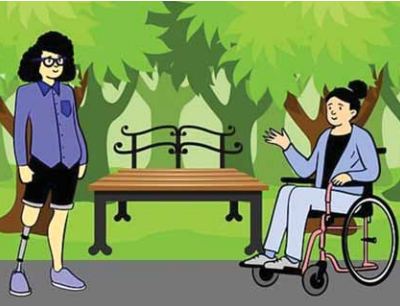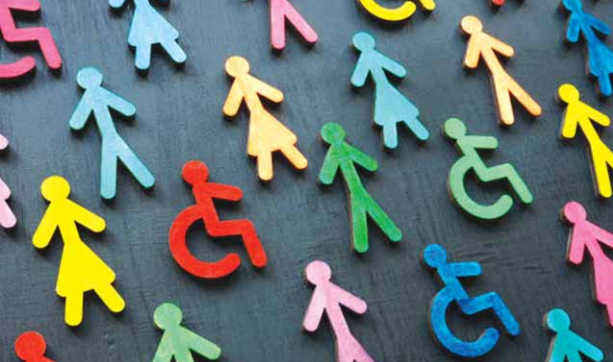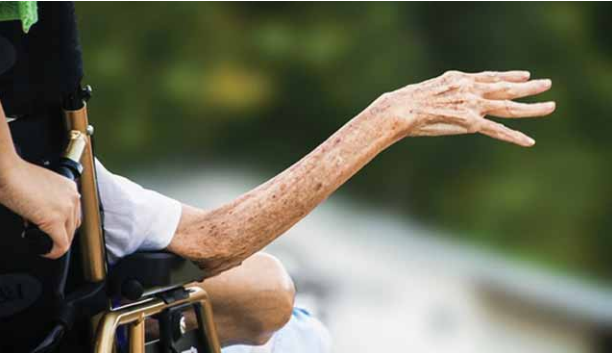Bishu Chaidhary is committed and passionate disaster management professional, dedicated to safeguarding communities and minimizing the impact of both natural and man-made disasters. His background in disaster management and geography provides him with a strong foundation in disaster preparedness, response, recovery, and mitigation strategies.

India, a country prone to diverse natural disasters, is making strides toward building more resilient communities — but how inclusive is this preparedness for persons with disabilities? From policy frameworks to on-the-ground realities, the journey toward disability-inclusive disaster management is complex and ongoing.
This article takes a deep dive into India’s current landscape of disaster preparedness through the lens of accessibility and inclusion. It explores the challenges faced by persons with disabilities during emergencies, highlights emerging practices, and examines whether the nation’s disaster management strategies are evolving to ensure no one is left behind.
Disasters, whether natural or man-made, pose significant risks to all members of society. However, people with disabilities are often disproportionately affected due to a range of barriers that limit their ability to prepare for, respond to, and recover from such events. These barriers include physical obstacles, lack of accessible communication, and insufficient support systems. As a result, ensuring that disaster preparedness efforts are inclusive of people with disabilities is not only a matter of human rights but also a critical component of building resilient communities. In India, a country highly vulnerable to natural disasters such as floods, cyclones, and earthquakes, the need for disability-inclusive disaster preparedness is particularly pressing.
This article examines the current state of disability inclusion in India’s disaster preparedness efforts. It explores the persistent challenges, highlights recent advancements, and reviews the guidelines set forth by the Indian government to address these issues. Finally, it offers recommendations for strengthening inclusion to ensure that no one is left behind when disasters strike.
The Current State of Disability Inclusion in India’s Disaster Preparedness
Challenges – Despite growing awareness of the need for disability inclusion, several significant challenges continue to hinder progress in India’s disaster preparedness efforts:
• Lack of Accessible Infrastructure: Many evacuation routes, disaster shelters, and relief centers remain inaccessible to people with physical disabilities. For example, the absence of ramps, wide doorways, or accessible toilets in shelters can prevent individuals from reaching safety or receiving essential services during and after a disaster. This gap in infrastructure design exacerbates the vulnerability of people with disabilities in emergency situations.
• Insufficient Training for Disaster Response Personnel: Emergency responders often lack the training needed to assist people with disabilities effectively. Without knowledge of how to evacuate someone with mobility impairments or communicate with individuals who are deaf or hard of hearing, responders may inadvertently delay or fail to provide critical support during a disaster.
• Limited Data on People with Disabilities: Accurate and comprehensive data on the number of people with disabilities and their specific needs is often unavailable. This data gap complicates disaster planning and resource allocation, leaving many individuals without the tailored assistance they require. For instance, without knowing how many wheelchair users reside in a flood-prone area, authorities cannot adequately prepare accessible evacuation plans.
• Social Stigma and Discrimination: People with disabilities frequently face societal barriers that exclude them from disaster preparedness efforts. Social stigma can prevent them from participating in community planning sessions or receiving timely disaster warnings, further isolating them during emergencies.
These challenges underscore the urgent need for systemic changes to make disaster preparedness truly inclusive in India.
Advancements – Despite these obstacles, India has made notable strides in integrating disability inclusion into its disaster preparedness framework:
• Inclusion in National Policies: The National Disaster Management Plan (NDMP), updated in 2019, explicitly recognizes the needs of people with disabilities. It calls for their active involvement in disaster planning and emphasizes the importance of ensuring that disaster management activities are accessible to all. This policy shift marks a significant step toward acknowledging disability as a critical factor in disaster risk reduction.
• Training Initiatives: Some government bodies and non-governmental organizations (NGOs) have introduced training programs to equip disaster response personnel with the skills to assist people with disabilities. These programs cover topics such as evacuation techniques for individuals with mobility impairments and communication strategies for those with sensory disabilities, enhancing responders’ ability to provide effective support.
• Accessible Disaster Shelters: In certain regions, efforts are underway to design or retrofit disaster shelters with accessibility features. These include ramps, accessible sanitation facilities, and designated spaces for people with disabilities. While these initiatives are not yet widespread, they represent a promising move toward universal access in disaster infrastructure.
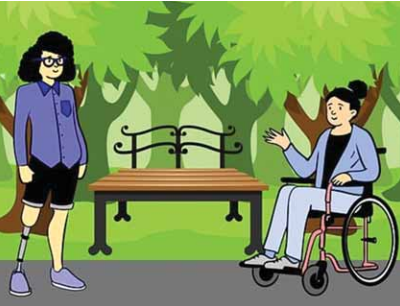
• Community-Based Programs: Grassroots initiatives are increasingly involving people with disabilities in disaster preparedness activities. These programs empower individuals to take an active role in their own safety and that of their communities, fostering resilience at the local level. For example, some communities have organized drills that include people with disabilities, ensuring their needs are considered in planning.
These advancements signal a growing commitment to disability inclusion, though their scale and consistency remain limited.
Review of India’s Guidelines
India’s primary framework for disaster management is the National Disaster Management Plan (NDMP), updated in 2019 by the National Disaster Management Authority (NDMA). The NDMP provides a comprehensive roadmap for disaster risk reduction and explicitly addresses the needs of vulnerable populations, including people with disabilities. Its guidelines on disability inclusion are structured around several key principles:
• Inclusive Planning: The NDMP emphasizes the importance of involving people with disabilities in the development and implementation of disaster management strategies. By including their perspectives, the plan aims to ensure that preparedness efforts reflect the real-world needs of this population.
• Accessible Communication: Recognizing that timely information is critical during disasters, the NDMP advocates for delivering warnings and instructions in accessible formats. This includes sign language for the deaf, braille or audio for the visually impaired, and easy-to-read materials for those with intellectual disabilities.
• Capacity Building: The plan calls for training programs to enhance the skills of disaster management personnel in addressing the needs of people with disabilities. This includes training on evacuation procedures, first aid tailored to specific disabilities, and psychosocial support to address trauma.
• Infrastructure and Accessibility: The NDMP promotes the construction of disaster-resilient infrastructure that is accessible to all. This applies to shelters, evacuation routes, and relief distribution centers, with an emphasis on incorporating universal design principles.
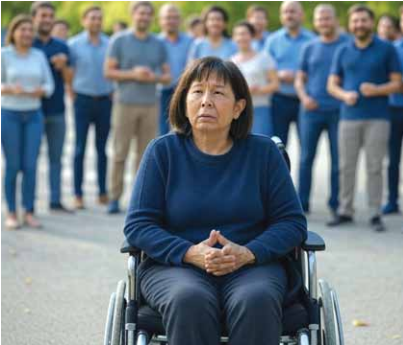
While the NDMP provides a robust framework for disability inclusion, its implementation has been uneven. Reports from recent disasters, such as the 2021 Cyclone Tauktae and the 2023 floods in northern India, indicate that people with disabilities continue to face significant barriers, including inaccessible shelters and delayed assistance. This suggests a disconnect between policy and practice, highlighting the need for better coordination and accountability.
Conclusion – India has made commendable progress in recognizing the importance of disability inclusion in disaster preparedness. The inclusion of disability considerations in the National Disaster Management Plan, alongside emerging training programs and infrastructure improvements, reflects a growing awareness of the issue. However, significant challenges persist, including inaccessible infrastructure, inadequate training, and a lack of comprehensive data on people with disabilities. These gaps leave vulnerable populations at heightened risk during disasters.
To build on the advancements achieved, India must take concrete steps to strengthen disability inclusion:
• Strengthen Implementation: Better coordination between government agencies, NGOs, and community groups is essential to translate NDMP guidelines into consistent, effective action across all regions.
• Invest in Accessible Infrastructure: All new disaster-related facilities should adhere to universal design standards, and existing infrastructure should be retrofitted to ensure accessibility.
• Expand Training Programs: Nationwide training for disaster response personnel should be scaled up to equip them with the knowledge and skills to assist people with disabilities effectively.
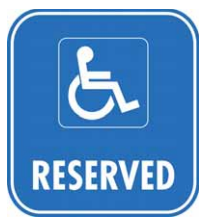
• Increase Involvement of People with Disabilities: Policymakers and planners must actively engage people with disabilities at every stage of disaster preparedness and response, ensuring their voices shape the strategies designed to protect them. By prioritizing these actions, India can move closer to a disaster preparedness framework that is truly inclusive, ensuring that all its citizens—regardless of ability—are safeguarded when disasters strike. The journey toward resilience is incomplete without leaving no one behind.


